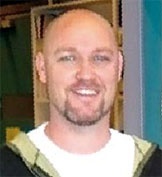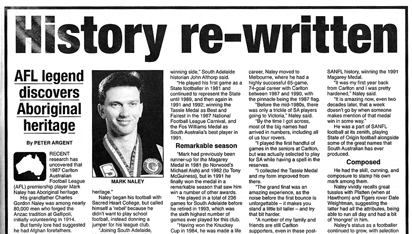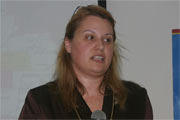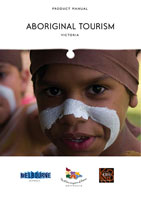People
Deconstructing Aboriginal identity myths
Have you caught yourself thinking, 'But they don't look Aboriginal...'? Aboriginal people can be dark-skinned and broad-nosed, or blonde-haired and blue-eyed. Let's get rid of some myths!

Wishing you knew more about Aboriginal culture? Search no more.
Get key foundational knowledge about Aboriginal culture in a fun and engaging way.
This is no ordinary resource: It includes a fictional story, quizzes, crosswords and even a treasure hunt.
Stop feeling bad about not knowing. Make it fun to know better.
Test yourself
Take the following identity test to see if you can find out which face belongs to a person who identifies as Aboriginal and which does not.
Which face belongs to an Aboriginal woman?
 |  |  |  |
 |  |  |  |
 |  |  |  |
 | |||
Could you figure it out?
Show
These women were posing for a calendar. All of them are proud Aboriginal women. It is a common mistake by non-Indigenous people to judge a person's Aboriginality by their skin colour. Skin colour does not define an Aboriginal person, descent does.
Myth: All Aboriginal people have black skin colour
This is the most common misconception of them all. Many people expect Aboriginal people to always have black skin.
Why have Aboriginal people all shades of black skin?
Les Ridgeway Snr, an Aboriginal Family Historian, explains why we see many people identifying as Aboriginal who have fair skin. [1]
"I guess it would be fair to say that many Aborigines could trace ancestry back to Irish, British and – if we go to Broome in WA – Japanese or some other Asian nationality.
For the record, if we trace one's ancestry, one possibly would find many folk are related to our Aboriginal race, due to the fact that in 1788 when Governor Phillip was appointed controller on behalf of the British Government, there were not enough white women to all those convicts and free settler white men.
So, naturally, a young 'full-blood' was their only choice and many became legally married, some by choice and others by force.
So our women folk and our tribal communities had no say in this matter back in those early days, so why do our folk worry about having to explain their Aboriginality?
When I was growing up, I was gifted with a very nice tan and jet black wavy hair, but you know, when I spoke to a number of people in my lectures, I was constantly told 'you don't talk like an Aborigine'. My reply was 'how do Aboriginal folk talk?'"
Aboriginal man Warren Mundine says: "I'm from the Bundjalung nation and also a descendant of the Gumbaynggirr and Yuin peoples.
"On my desk there's a photo of me with my children and my grandchildren. The people in this photo have a range of different skin tones, eye and hair colours. They are all my descendants and therefore they are all Bundjalung. To say that any of them are not Bundjalung would be like saying they are not part of my family." [2]
Following is an extract from the poem The First Australians by Troy Hopkins from Oxley, Queensland. It tells us about an Aboriginal girl yearning for her dad's darker skin colour and his own experiences. [3]
My daughter wished she was my skin colour, I told her you don't want this. This country hates me 'cause I'm black, I'm glad I can't grant this wish. [...] Too Black Too Strong is a way of life, my daughter has much pride. Those blacks could learn a lot from her, her colour is inside.
.jpg)
In a 2008 exhibition, Not Really Aboriginal, Aboriginal artist Bindi Cole explored what non-Indigenous people thought what an "Aboriginal identity" should look like. [4]
She photographed members of her light-skinned family who had blackened their faces, an allusion to early movies where white actors had blackened their skin to play Aboriginal people.
Given her background you could imagine the hurt she must have felt when people, seeing her blonde hair and blue eyes, asked "What are you? But you're not really Aboriginal...!".
With such remarks people try to define Bindi's identity for her, but they are utterly racist. And the fact remains that these remarks are still 'rampant throughout Australian society'. [4]
Cheri Yavu-Kama-Harathunian had a similar experience: "I apparently don't fit the 'look' of who is supposed to be an Aboriginal. When I ask, 'Well what does an Aboriginal look like?' I get this silly cringy look because the person asking is maybe for the first time confronted with their own internal racism.' [5]
It should be emphasised that Aboriginal identity no longer has anything to do with the colour of the skin.
What is Aboriginal? According to most white experts and the media, it's a black person who lives in a remote community, has social issues and claims benefits that are way above what they deserve. So being Aboriginal but white, fairly socially adjusted and living in an urban area, where do I fit in?
— Bindi Cole, Aboriginal artist
Aboriginal people are not a skin colour, we are a community and people by history, spirituality, locations, country, thinking, politics, treatment, laws, cultures and most importantly, our stories.
— David Towney, readers letter, Koori Mail [6]
If you are like me with paler skin, because of an Irish mother and my later father was Aboriginal, I find myself having to explain my Aboriginality over and over [again].
— Najella Green, readers letter, Koori Mail [7]

Story: "I was a 'white' black man."
Mark McMillan belongs to the group of fair-skinned Aboriginal people. In this extract [8] he tells you his perspective on Indigenous identity.
"I am a blonde-haired, blue-eyed, fair-skinned Aboriginal Australian. Every time I look in the mirror, that's what I see... As a child, I grew up expecting everyone to be like me, to look like me - with the blonde hair and blue eyes.
Clearly, my naive ideas about how Aboriginal people were 'supposed' to look were wrong. But being Aboriginal and fair and blonde was normal to me and I grew up in a world where I was treated 'normally'. Along the way however, I noticed that not everyone was receiving the same brand of treatment and that made me angry. It has taken a while to let go of that anger...
It has taken me a long time to realise that I am Aboriginal because of my family, my community and who I am in general. I know now that no one has the power to take that from me...
In our household, Aboriginality was never discussed as being something special or anything less than ordinary. It was just who we were, both as individuals and as a family. I never looked at my family members and thought, 'Wow, you look really Aboriginal.' Or, 'Gee, you look really white!'...
Impeding my growth from that young person into the adult I wanted to become was the profound issue of identity. I was a 'white' black man...
I grew up in a place where everyone knew I was Aboriginal and part of an Aboriginal family, but the moment I moved outside that environment, I found I had to constantly explain away that aspect of my identity...
How do you begin to explain to someone that you have started to question everything you ever believed about yourself because you are required to defend it so often?...
Over the years education has continued to unlock me for me. I am Mark McMillan and I am a lot more than just a 'white', black man. Although being Indigenous - or more importantly, a proud Wiradjuri man - is fundamental to my own sense of humanity, I am much more than that dimension."
Lost Identity
Where Do I come from, Where do I begin Is he my brother, is she my sister, My next of kin? Being not accepted by either race This is what each day I have to face Maybe this is my problem But I donʼt really see how Why were my parents taken away And made to deny Being of a fairer skin And not brown like my brothers I miss My Identity, My Culture, and My Mother
Poem by Margaret Armstrong, Ipswitch QLD. [9]
Aboriginal people of mixed descent feel the double sword with which Australian society judges them. When they blend in or are successful it is their 'white identity', but they are Aboriginal if they go to jail, die early or suffer from alcoholism. It is a constant battle with Aboriginal stereotypes.
Finding out which culture you want to belong to is not an easy road. "I have been too black for the white community and too white for the black community," says Ian who is of Scottish and Wadi Wadi descent. "Due to this conflict only two of the six kids in my family are prepared to stand up and be identified as Aboriginal." [10]
If you are fair-skinned or have European features, you can find yourself explaining your Aboriginality to absolutely everybody.
— Sharon Livermore, Aboriginal poet [11]
Story: Definitely Indian
Following is a conversation between an Aboriginal woman who visited India. [12]
[Indian person inquiring:] "We are thinking you are one of us?"
"Sorry no, I am from Australia."
"Yes but you are looking, Punjabi?"
"No."
"Tamil?"
"No."
"Are you from Mumbai?"
"No."
"Yes, but your parents are Indian, yes?"
"No, sorry."
"Your grandparents?"
"No."
"Argh yes, your great grandparents!"
"No, sorry, I am Aboriginal."
"Where is that?"
"No, I am native, original, ummm from Australia."
"Oh yes, but someone in your family migrated to Australia from India, yes?"
"It's hip to be black"
To add injury to insult, some non-Indigenous Australians suggest that people who identify as Aboriginal do so out of self-obsession and "driven more by politics than by any racial reality". [13]
Andrew Bolt, journalist and blogger for the Sun Herald, lists at length Aboriginal people of mixed descent who he claims have "a racial identity you could not guess from [their] features". When he proposes to "go beyond racial pride, beyond black and white" he implies that these people not claim they are Aboriginal. But he fails to suggest what they should do instead.
Bolt's article reflects an attitude felt by some Australians that mixed-descent Aboriginal people identify so to claim benefits they would otherwise not be entitled to, taking away jobs from other 'more black' or – worse – white people.
Despite popular opinion over the last several generations, no-one really in their right mind would declare Aboriginality unless it were true. The myth of the extra money and extra benefits is really a piece of crap. And the backlash far outweighs the benefits.
— Sharon Livermore, Aboriginal poet [11]
What do we get out of being Indigenous? Not money, not hand-outs--but plenty of racist remarks.
— Najella Green, readers letter, Koori Mail [7]
Australians like Andrew Bolt seem to forget that we have a choice. Who but prejudiced people can stop you from identifying with one part of your heritage stronger than with another? I'm sure there are people out there who have also Aboriginal blood in their veins but don't mention it with a word.
We should also not forget that the first mixed-descent Australians came into existence not by choice but through crimes by white people. Just ask any member of the Stolen Generations.
Once we we were too black and now we are too white. We reject that. Black or white, we are and always will be Aboriginal because of our unique cultural experience and identity.
— Abigail Burchill, President Tarwirri Indigenous Law Students and Lawyers Association of Victoria [14]
For people who still judge Aboriginality after skin colour Abigail has these words:
Aboriginality is not a question of skin colour--it is about our cultural connection to our communities and our history, a history that is alive and thriving.
— Abigail Burchill [14]

Myth: All Aboriginal people live in remote communities

Young urban Aboriginal people complain about being told they are not 'real Aborigines' because they don't live in a remote community. [15]
And many urban non-Indigenous people have no idea how many Aboriginal people live in the big cities.
I am often asked, 'How often do you visit Aboriginal communities?' And I reply, 'Every day, when I go home'.
— Prof. Larissa Behrendt, Aboriginal lawyer [16]
Most people still believe that Aboriginal people are poor, uneducated and live in the desert. But only 25% of Aboriginal people live in remote areas.
While the vibrant life of urban Aboriginal communities goes mostly unnoticed, the national eyes turn willingly to reports of violence, criminal activities or antisocial behaviour (such as drinking) which then shape the perception of urban Aboriginal identity.
Aboriginal writer Anita Heiss, author of "Am I Black Enough For You?", describes herself as "a concrete Koori with Westfield dreaming". [17] She is urban, educated, glamorous and cheeky, hates camping and cannot tell the time by the sun. [18]
Too many Australian government policies are about Aboriginal people who live in remote areas, almost as though if that's not where you live you can't be a real Aboriginal person.
— Nyoongar Prof Colleen Hayward, Edith Cowan University, Perth [19]
Think: When Western societies evolve it is called "modernisation", when Aboriginal societies evolve it's called "cultural loss". Western societies become "cosmopolitan" whereas Aboriginal societies are being "urbanised" and "lose touch with their roots". Which stereotypes can you find in such vocabulary?
Myth: All Aboriginal people are beautiful and healthy

You don't need to venture out far to find images of beautiful young Aboriginal children or adolescents promoting Australia, mainly for tourism.
But the stories behind these images can be surprisingly different.
When Qantas published a similar picture of a young 18-year-old Aboriginal girl under its 'The Spirit of Australia' slogan it forgot to mention that the girl actually lived in a mission dormitory which she shared with more than a dozen in-laws, family and dogs. Her community suffered from diabetes, heart disease and obesity, and had poor access to essential services. [16]
These beautiful and glamorous images about Indigenous Australia often belie the reality of these people.
— Linda Burney, chairwoman NSW State Reconciliation Committee [16]
Myth: You can pick Aboriginal people by their name
Many people try to tell if a person is Aboriginal by reading their names. This technique can fail easily. Take the following test:
Which name belongs to an Aboriginal person?
David Wang
Sir Douglas Nicholls
Elsie Gertrude Hill
Emily Kngwarreye
Jimmy Pike
Peter Yu
Shannon McGuire
William Ferguson
Vernon Ah Kee
Sermsah Bin Saad
Show
People whose identity is Aboriginal are bold, non-Indigenous people are italicised.
- David Wang (1920-78) was an Australian-Chinese businessman and community leader and the first Chinese-born Melbourne City councillor.
- Sir Douglas Nicholls (1906-1988) was born in Cumeroogunga, near the Murray River in New South Wales, and was Australia's first Aboriginal state governor. [20]
- Elsie Gertrude Hill is the Kamilaroi mother of Aboriginal singer LJ Hill. [21]
- Emily Kngwarreye is a famous Aboriginal painter (1910 - 1996) from the Utopia community, near Alice Springs in the Northern Territory.
- Jimmy Pike (1940 - 2002) is a Walmajarri Aboriginal painter from the remote Great Sandy Desert area in north Western Australia.
- Peter Yu is a Yawuru man from Broome who headed the review of the Howard government's controversial intervention into Northern Territory Indigenous communities. He's also chair of the Halls Creek Project Management Committee and a former director of the Kimberley Land Council. [22]
- Shannon McGuire is an Indigenous model and girlfriend of West Coast Eagles star David Wirrpanda. [23] Her picture is the second image in the test above.
- William Ferguson (1882-1950) was a trade unionist and Aboriginal politician of the Australian Labor Party. [24]
- Vernon Ah Kee hails from Innisfail, Queensland and is an Aboriginal photographer.
- Sermsah Bin Saad, a Nyoongar man from Western Australia, was awarded Dancer of the Year in 2008 for his performances on So You Think You Can Dance. "I'm black and I'm beautiful!" he says.
Myth: Aboriginal people cannot be successful
Another white misconception is about success of Aboriginal people. Malcolm Tulloch, former Holroyd City Council Mayor, says white people "see you as a 'blackfella' first, and whatever I have achieved, it is perceived that someone has given it to me because of my black background." [25] Hence he finds himself not making his Indigenous identity known as much as he might want to.
Challenge yourself: Do you know of someone who identifies as 'Australian' but actually has migrated to Australia? Like Melbourne's Lord Mayor John So who was born in Hong Kong. We have to be careful when we define identity because our first definition might be utterly wrong.
Apparently we're disadvantaged by being born Aboriginal. I don't accept that.
— Alison Page, Aboriginal designer and TV personality [26]